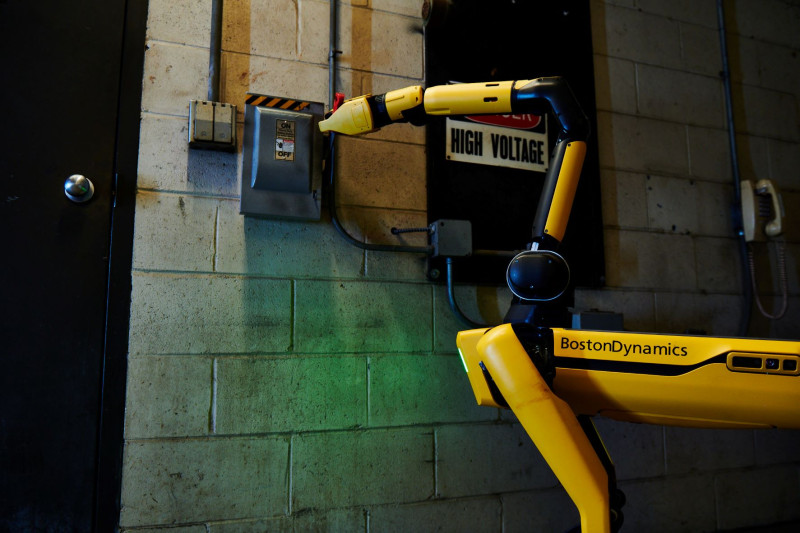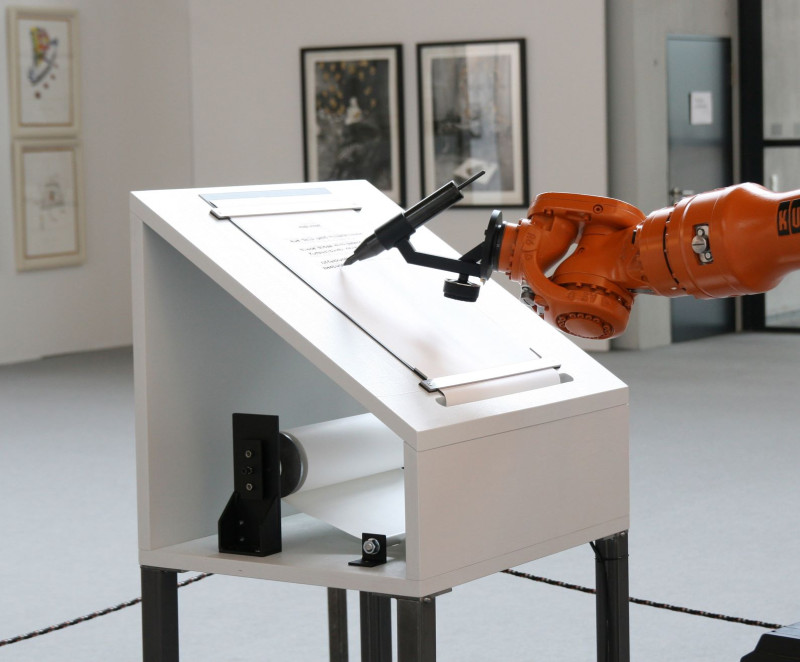The exhibition is co-organized by the “Museum of Applied Art” (MAK) in Vienna and the “Design Museum” in Ghent, Belgium
How should we deal with new technologies as individuals and as a society? Do we need robots? Are they our friends or enemies? Can we trust them? Can artificial intelligence (AI) be creative so that e.g. ChatGPT to write children’s books or novels? Will robots ever be at the top of the species evolution pyramid? These are some of the questions posed by the exhibition “Hallo robot/Hello robot. Design between man and machine” at the “Vitra Design” Museum in the German city of Weil am Rhein next to the Swiss Kingdom of Basel and very close to the border with France.
The robots are here. What sounds like science fiction or conspiracy theory has long been commonplace. Robotics is entering our lives more and more. Cargo drones, care robots, internet bots that execute automated commands, ATMs, the self-propelled train between airport terminals and more are controlled, at least in part, by robotics. According to the organizers of the exhibition, the design lies between the point of contact between the human and this robotic environment and shows how the interaction and relationship between man and machine, but also between people, is shaped.
The exhibition, which is co-organized by the “Museum of Applied Art” (MAK) in Vienna and the “Design Museum” in Ghent, Belgium, includes more than two hundred exhibits from industry, the home, computer games, multimedia installations and examples from cinema and literature. All make it clear how much robots are infiltrating our lives, down to the most personal aspects of our lives. They also highlight how much our lives can be controlled today by algorithms and artificial intelligence, and the dangers they pose. It therefore also deals with the ethical, social and political issues related to the growing influence of robotics. Visitors are presented with 14 questions divided into four sections.
The first section deals with the initial enthusiasm for artificial man. Here we meet not only well-known robots from film and literature, such as the lovable and funny little robot “R2-D2” from the movie “Star Wars” but also the very real robot dog “spot”, who helps with missile tests and in the excavations of Pompeii. Recently, in fact, the “spot” has gained controversial celebrity thanks to a video showing him in the desert of Shanghai with a megaphone on his back asking citizens to comply with the measures for the coronavirus…
The second part is dedicated to the industry and the world of work – and intellectual – illuminating the subject from different angles. The range of exhibits here ranges from classic industrial robots to an installation by the RobotLab team, in which a robot writes non-stop texts. However, according to the curator of the exhibition Amelie Klein “A robot that writes a text can speak three languages, has a vocabulary, knows grammar and syntax but does not understand what it is writing”. It therefore explores the boundaries between automated work and human creativity. Another example is the (Motorola) symbol device, a portable terminal used in large logistics centers. Orders appear directly on the screen and the employee’s finger-worn scanner records the processing and their performance is monitored live. This development is the subject of controversy and, as expected, constantly provokes negative comments.
How technology is constantly coming closer to us, as a “friend and helper”, in everyday life, in the household, in care, as a digital companion and even in cybersex, becomes clear in the third part of the report. “The robot cannot feel emotions. This will not change in the near future”, according to the director of the Museum Matteo Chris, but it is particularly interesting to observe how not only the relationship between man and machine is changing, but also the interaction of people.
The fourth section is about the progressing “unification” of humans and robotics, for example when we move around in a so-called “smart city”. Technology shapes us and we shape our technological, robotic environment. Berlin-based multimedia artist Simon Weckert created for the video installation “Google Maps Hacks”, an artificial traffic jam on Google maps with a cart full of smartphones on empty streets and the information is immediately processed. Weckert thus makes us realize that we have been living in a robotic environment for a long time.
Of course, the conclusions are left to the visitor and not to the robots. However, many questions remain. The debate about artificial intelligence oscillates between utopia and dystopia, between the hope for a better, -technological-world and the fear of human marginalization. And Art? Is a work by Ai-Da, the first robot-painter, which caused a sensation last year at the Venice Biennale, really art? The answer to the question was given to Deutsche Welle in a short and comprehensive way by Ahmed Elgamal, professor of Computer Science at Rutgers University New Jersey: “The real art is programming the robot itself.”
Source :Skai
I am Terrance Carlson, author at News Bulletin 247. I mostly cover technology news and I have been working in this field for a long time. I have a lot of experience and I am highly knowledgeable in this area. I am a very reliable source of information and I always make sure to provide accurate news to my readers.












